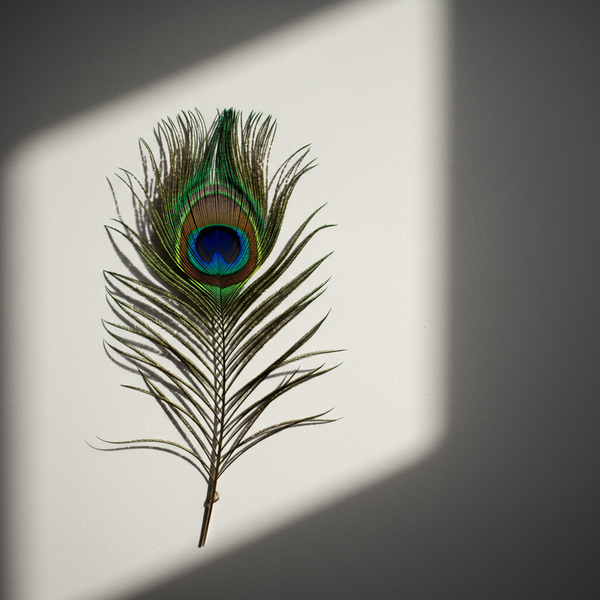Judging vs. Perceiving: How Your MBTI Type Approaches Life

You know that friend who has their entire week color-coded and calendared, not just for appointments, but for "free time" too? And then there's the other friend, the one who happily throws a dart at a map to decide their next vacation spot, often booking the flight just days before departure. These aren't just personality quirks; they're often a dead giveaway for one of the most fundamental distinctions in the Myers-Briggs Type Indicator: whether you lean towards Judging (J) or Perceiving (P).
This J vs. P preference isn't about whether you're judgmental or perceptive, so let's clear that up right away. It's about how you approach the outside world—how you prefer to live your life. It speaks to your natural rhythm, your comfort with structure, and your inclination towards making decisions versus keeping your options open. Understanding this piece of your MBTI puzzle can be like finding the instruction manual for your own brain, offering clarity on why some tasks feel like a breeze and others like pulling teeth, and shedding light on your relationships with others.
Unsure which path aligns with your unique strengths? Get a career reading from Celeste to discover optimal careers for your Myers-Briggs type.
The Architects of Life: Understanding the Judging Preference (J)
Imagine someone walking into an empty room and immediately envisioning where every piece of furniture will go, down to the last throw pillow. That's the essence of a Judging type. Individuals with a J preference thrive on organization, structure, and closure. They like to have things settled and decided. This isn't just about tidiness, though many J-types do have a knack for keeping things orderly; it's a deep-seated preference for planning and executing.
For J-types, life is often approached with a clear roadmap. They prefer to make decisions, set goals, and then work systematically towards achieving them. Deadlines aren't just suggestions; they're guideposts. Finishing a task provides a sense of accomplishment and peace, creating mental space to move onto the next item on their diligently crafted to-do list. This isn't to say they're rigid or inflexible, but they generally feel most comfortable when they know what to expect and have a plan in place. Think of them as the natural project managers of the world, adept at scheduling, prioritizing, and bringing things to a definitive close. They often gain energy from completing a task and crossing it off their list.
The Explorers of Life: Understanding the Perceiving Preference (P)
Now, picture that same empty room, but this time, the person walking in sees endless possibilities. Maybe a cozy reading nook here, or a vibrant art studio there, or perhaps a minimalist space that can transform based on the mood. That's the spirit of a Perceiving type. P-types gravitate towards spontaneity, adaptability, and keeping their options open for as long as possible. They prefer to experience life as it unfolds, often embracing flexibility and last-minute changes.
For P-types, a detailed plan can feel restrictive. They find energy in adapting to new information, exploring different paths, and delaying decisions until the absolute last moment, ensuring all angles have been considered (or simply that a better, more exciting option hasn't popped up!). Deadlines can feel like unwelcome impositions, spurring a burst of activity often just before the eleventh hour. This isn't procrastination in the traditional sense, but rather a preference for living in the moment and responding to circumstances as they arise. They are often excellent improvisers and can navigate unexpected twists and turns with grace. Think of them as the natural adventurers, open to new experiences and comfortable with a less structured approach to life. They often gain energy from the process of exploring and discovering, rather than just the act of completion.
Living in Harmony: J and P in the Real World
The beauty of the J/P dichotomy truly shines when you observe how these preferences play out in everyday scenarios and relationships. A J-type planning a vacation might have a minute-by-minute itinerary, while their P-type travel companion might prefer to wake up and see where the day takes them. This isn't a recipe for disaster, but rather an invitation for understanding and compromise.
In the workplace, J-types are often the ones who create the systems, set the project timelines, and ensure things stay on track. P-types, on the other hand, might excel in roles requiring creative problem-solving, adaptability to changing client needs, or a willingness to pivot strategies on the fly. When these types collaborate, the J provides the necessary structure, while the P brings innovative ideas and flexibility.
Consider a couple: one a J, one a P. The J might find the P's spontaneity thrilling but sometimes anxiety-inducing, while the P might appreciate the J's reliability but occasionally feel stifled by their need for order. Recognizing these inherent preferences allows for empathy. Instead of "Why can't you just make a decision?" or "Why do you always have to plan everything?", the conversation shifts to "I know you like to keep your options open, but I really need to nail down our dinner plans by 5 pm" or "I understand you like a clear schedule, but could we leave a little room for impulse activities on Saturday?"
The Cognitive Roots: Connecting to Your Middle Functions
It’s important to remember that the J or P in your MBTI type actually indicates which of your dominant or auxiliary functions is extraverted. For example, an ISFJ (Judging) extraverts Sensing (Si) but their dominant function is Introverted Sensing, which is a perceiving function. An ISFP (Perceiving) extraverts Feeling (Fe) but their dominant function is Introverted Feeling, which is a judging function. The J or P at the end of your type simply tells us whether your favorite mental function that you use in the outer world is a Judging function (Thinking or Feeling) or a Perceiving function (Sensing or Intuition). This is why sometimes a J-type can seem very spontaneous in their inner world and vice versa for a P-type. It’s all about what you show to the world. But for practical purposes, the J/P preference describes your general outward approach to life.
Embracing Your Natural Flow
Understanding whether you lead with Judging or Perceiving isn't about boxing yourself in, but about liberating yourself through self-awareness. It helps you recognize your strengths and anticipate potential friction points in interactions. If you're a J-type, lean into your natural ability to organize and bring things to completion, but also challenge yourself to embrace a little spontaneity now and then. If you're a P-type, celebrate your adaptability and openness, but also practice the art of making a decision and sticking to it when necessary.
Ultimately, there's no right or wrong preference. Both Judging and Perceiving types contribute unique and invaluable approaches to the world. When we understand and appreciate these differences, we create space for more effective communication, stronger relationships, and a deeper appreciation for the rich tapestry of human nature. So, whether you're meticulously planning your next adventure or waiting to see where the wind takes you, remember that your approach is a perfectly valid and essential part of who you are.




